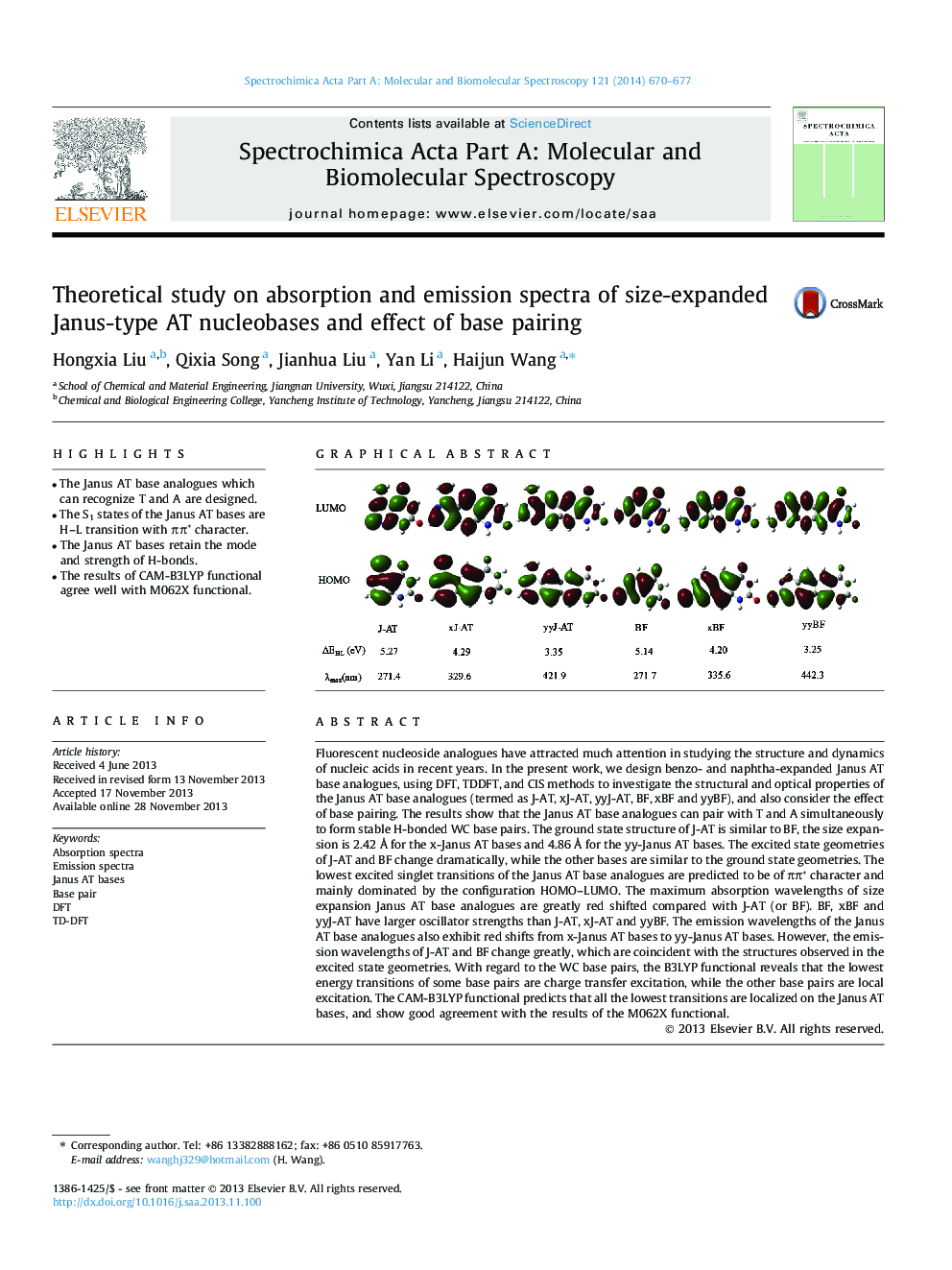| کد مقاله | کد نشریه | سال انتشار | مقاله انگلیسی | نسخه تمام متن |
|---|---|---|---|---|
| 1230521 | 1495247 | 2014 | 8 صفحه PDF | دانلود رایگان |

• The Janus AT base analogues which can recognize T and A are designed.
• The S1 states of the Janus AT bases are H–L transition with ππ* character.
• The Janus AT bases retain the mode and strength of H-bonds.
• The results of CAM-B3LYP functional agree well with M062X functional.
Fluorescent nucleoside analogues have attracted much attention in studying the structure and dynamics of nucleic acids in recent years. In the present work, we design benzo- and naphtha-expanded Janus AT base analogues, using DFT, TDDFT, and CIS methods to investigate the structural and optical properties of the Janus AT base analogues (termed as J-AT, xJ-AT, yyJ-AT, BF, xBF and yyBF), and also consider the effect of base pairing. The results show that the Janus AT base analogues can pair with T and A simultaneously to form stable H-bonded WC base pairs. The ground state structure of J-AT is similar to BF, the size expansion is 2.42 Å for the x-Janus AT bases and 4.86 Å for the yy-Janus AT bases. The excited state geometries of J-AT and BF change dramatically, while the other bases are similar to the ground state geometries. The lowest excited singlet transitions of the Janus AT base analogues are predicted to be of ππ* character and mainly dominated by the configuration HOMO–LUMO. The maximum absorption wavelengths of size expansion Janus AT base analogues are greatly red shifted compared with J-AT (or BF). BF, xBF and yyJ-AT have larger oscillator strengths than J-AT, xJ-AT and yyBF. The emission wavelengths of the Janus AT base analogues also exhibit red shifts from x-Janus AT bases to yy-Janus AT bases. However, the emission wavelengths of J-AT and BF change greatly, which are coincident with the structures observed in the excited state geometries. With regard to the WC base pairs, the B3LYP functional reveals that the lowest energy transitions of some base pairs are charge transfer excitation, while the other base pairs are local excitation. The CAM-B3LYP functional predicts that all the lowest transitions are localized on the Janus AT bases, and show good agreement with the results of the M062X functional.
Figure optionsDownload as PowerPoint slide
Journal: Spectrochimica Acta Part A: Molecular and Biomolecular Spectroscopy - Volume 121, 5 March 2014, Pages 670–677